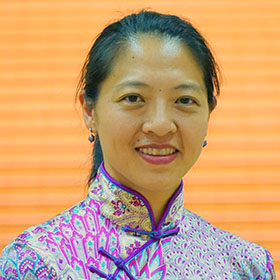“UNHCR Refugee Photography Exhibition” was held with the cooperation of UNHCR (United Nations High Commissioner for Refugees) Office.
This photo exhibition entitled “NOWHERE PEOPLE: THE WORLD’S STATELESS - Try Thinking Nationality – Stateless People in the World” is a part of the campaign to highlight the “statelessness problem” and to think of new ways to solve this problem.

The photographs exhibited were the work of world-class photographer Greg Konstantin, who is working to promote understanding of statelessness.

Photographs were exhibited at 4 facilities in Tamagawa Gakuen, so that students, children, and local people could easily visit. It was actually the UNHCR’s first attempt to exhibit at facilities that are not universities.
Many local people visited Tamagawa Gakuen’s campus store gallery which is open to the public, and we were able to convey the problem of statelessness to a wider range of people.

Inside Tamagawa University, it was exhibited in two places. One was the ELF Study Hall TAMAGO lounge.

Another one was the school library. Many students using the facilities stopped to look at the pictures and their explanations.

At the multimedia resource center in the upper school building (for high school students), layouts were arranged to be able to be seen easily by students using the facility.

Stateless people living in various countries were photographed in powerful compositions on beautiful black-and-white.
Children who have to work without receiving national education, a woman who cannot get a regular employment because it is impossible to issue an identity card for her, people who get stuck in the streets while fleeing trouble, these were all examples of the displays. The harsh reality of people who have fallen into a state of statelessness for social reasons such as war, ethnicity, religion and so on were shown.


“The problem of “statelessness ” is difficult to imagine from everyday life. I was able to get a new perspective from a number of persuasive pictures today.”
“I got a lump in my throat. I just wish that these photos will touch the eyes of more people.”
“We have to accept the reality that there are about 10 million stateless people in the world, I would like to look at statelessness in Japan as well.”
People who visited the photo exhibition spoke of such impressions.

The film festival was held on October 26th during the photo exhibition period.
About 10 college students and 30 high school students participated and watched the film “Stateless- Where is MY Country? ” and the discussion with Professor Chin Teng as well. Professor Teng is the leading researcher on issues of statelessness at the International Academy of Sciences at Waseda University.

The movie was a documentary summarizing how Ms. Chen interviewed stateless people living in Japan.
Along with their livelihoods and daily lives, it highlighted the other problems associated with statelessness and how people are suffering and having lots of trouble because there are no laws to protect them and no culture of understanding this issue.

People in the film who are forced to live a hard life of not having a nationality, not getting married and not having a job because of an escape to Japan or circumstances with their parents and or homeland, touched audiences heart.
“I am Japanese. So, I want to go back to Japan. I wonder if I can return to Japan. But am I Japanese? Am I really Japanese?” was one memorable quote.
At the end of the movie, we saw the sad story of a girl who was forcibly repatriated to the Philippines and separated from her parents. Most of the audiences could not hold back their tears.

The discussion after the movie progressed in a way where Professor Chen responded to each of the students` fears and questions.

“Is statelessness a problem peculiar to Japan?”
“Why Japan does not incorporate stateless laws?”
“What can young people do to solve the problem?”
Were examples of the questions asked.


Students who gained a strong interest into this issue after the photo exhibition and the movie, asked many questions, and Ms. Chin listened to each person and answered carefully.

Even after the discussion, questions continued and the students were very emotional. Professor Chin was impressed with their sensibility and sensitivity to the issue. “People like you must show your leadership in Japan. Please defeat the prejudice of the world, let’s make our own new values, and please brighten the world”, she encouraged.

The photo exhibition gave a chance to highlight the problem of statelessness which is not familiar in Japan, and the film festival stimulated the audiences’ feelings to consciously act on the issue. These events created meaningful opportunities for many people to learn more about the problems in our society.




